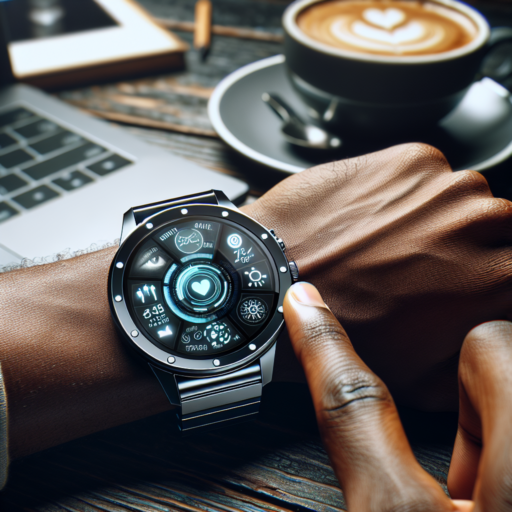What do you call a touch screen watch?
A touch screen watch is commonly known in the tech world and among consumers as a smartwatch. These innovative devices extend the capabilities of a traditional watch by incorporating touchscreen technology, allowing users to interact with their device more dynamically than with buttons alone. Smartwatches have revolutionized how we stay connected, track our health, and manage our daily tasks, blending the functionality of a smartphone with the convenience of a wristwatch.
One of the hallmarks of smartwatches is their ability to pair with smartphones, providing seamless access to notifications, calls, messages, and various apps. This connectivity has made them an indispensable tool for many, enhancing productivity and ensuring that crucial information is just a tap away. Not only do they serve as communication aids, but smartwatches also feature built-in sensors and apps geared towards health and fitness tracking, from monitoring heart rates to tracking steps and activity levels.
The evolution of touch screen watches has led to a diverse market, with models ranging from the fitness-oriented to the fashion-forward, each offering a unique set of features tailored to different lifestyles and preferences. Whether it’s for staying connected on the go, improving health and fitness, or simply enjoying the latest in wearable technology, a smartwatch represents the epitome of modern convenience and style.
Why is my smart watch touch screen not working?
Experiencing issues with your smart watch’s touch screen can be frustrating, especially when it affects your daily use. There are several common reasons why your smart watch’s touch screen might not be responding effectively. Understanding these causes can help in troubleshooting the problem and finding a solution.
Screen Cleanliness and Physical Condition
One of the most straightforward reasons for a smart watch touch screen not working is the presence of dirt, moisture, or debris on the screen. Fingerprints and grease can significantly reduce the screen’s responsiveness. Similarly, minor scratches or damages can also affect its functionality. Regularly cleaning your smart watch’s screen with a soft, lint-free cloth can prevent these issues and ensure optimal touch responsiveness.
Software Issues
Software glitches can often be the culprit behind unresponsive touch screens. If your smart watch’s operating system or a specific application is not up to date, it might lead to compatibility issues affecting the touch screen’s performance. Performing regular software updates can resolve these glitches and restore the touch screen’s functionality. In some cases, a factory reset may be required to eliminate deep-rooted software issues, though this should be considered as a last resort due to the loss of data.
Hardware malfunctions can also lead to touch screen problems. If your smart watch has been dropped or exposed to water, the touch screen’s hardware components might be damaged. This type of issue generally requires professional repair or replacement of the affected parts. It’s crucial to handle your smart watch with care and protect it from harsh environments to prevent such problems.
How does touch watch work?
Understanding the functionality of a touch watch hinges on grasping the principles behind touch screen technology. At its core, a touch watch utilizes a capacitive touch screen display, which is sensitive to the touch of a human finger. This sensitivity is due to the conductive nature of human skin, which interacts with the watch’s electromagnetic field to register touch.
Capacitive touch screens are layered with a material that stores electrical charges. When the screen of a touch watch is touched, it disturbs the screen’s electromagnetic field. This disturbance is detected by the watch’s sensors, which then interpret the location of the touch. This process allows the watch to perform the commanded action, such as displaying the time, opening an app, or setting an alarm. It’s a seamless blend of hardware and software working in concert to interpret human input without the need for traditional buttons or dials.
Moreover, touch watches often incorporate additional technology to enhance user interaction. These may include haptic feedback, which provides physical sensations to the wearer in response to touch, and gesture recognition, which allows for more complex commands through specific finger movements. These features are designed to make the user experience as intuitive and efficient as possible, marrying form and function in a compact wearable device.
How do you use a touch smart watch?
Using a touch smart watch has become an integral part of our daily routine, offering a blend of convenience and technology right at our fingertips. To fully harness the power of your touch smart watch, it begins with mastering the basics of its interface. The touch screen is the primary way you’ll interact with your device, allowing you to swipe, tap, and press your way through various apps and notifications.
Navigating Your Smart Watch
Start by waking up your smart watch’s screen with a simple tap or a wrist gesture. From here, you can swipe vertically to scroll through notifications or horizontally to access different widgets and apps. A gentle tap will open an app, while a long press might reveal additional options or allow you to customize the watch face. Remember, the responsiveness and gestures can slightly vary between different models and operating systems, so it’s crucial to familiarize yourself with your device’s specific instructions.
Customizing Your Experience
Customization is a key feature of touch smart watches, enabling you to tailor the device to suit your needs and preferences. Dive into the settings menu by tapping on the gear icon — this is where you can adjust brightness, change your watch face, manage notifications, and set up health tracking parameters. For an enhanced experience, explore the app store associated with your smart watch. Here, you can download various apps ranging from fitness tracking to productivity aids, all designed to boost your daily efficiency.
Lastly, integrating your smart watch with your smartphone unlocks a new level of connectivity. By doing so, you can manage calls, texts, and even access mobile apps directly from your wrist. The process involves downloading a companion app on your phone and following the steps to pair the devices. While it might seem complex at first, investing a little time in learning these basics can transform your touch smart watch from a simple gadget into a powerful assistant.










